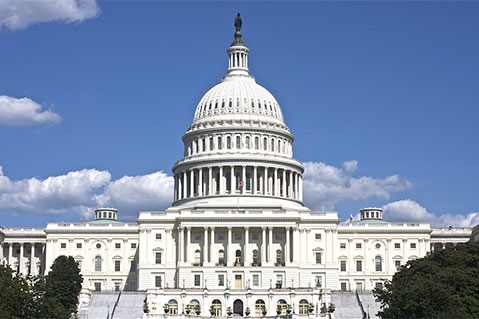Commentary March 07, 2016
Counselor Commentary: The Best of Government Spending
It’s common – and wrong – to question how government agencies spend money on promotional products. Those are smart investments, even though some don’t want to admit it.

Election season really does bring out the worst in just about everybody. Candidates, political action committees, backers, government officials, and voters even – they all end up slinging mud at some point in an election year. So, 2016 is certainly no different, and considering the tenor of the presidential campaign, it may even be the worst yet.
But one common line of criticism, which definitely ramps up during election years, is how government offices (local, state, federal) spend money on promotional products. These are used in many ways by public offices – rewards for employees, awareness campaigns, job fairs, and retention and hiring efforts. They’re all legitimate expenses because they provide value and help these government offices spread their messages and achieve their goals.
Not everybody wants to admit that. Take officials in Texas, for example. A recent report on KHOU, a CBS-affiliated television station in Houston, and online at KHOU.com revealed that the media outlet’s “investigative reporters” totaled up how much state government agencies spent on promotional products that it used as rewards for employees between September 2008 and December 2015. The grand total? A whole $8.8 million worth of what the report calls “trinkets.”
The range of promotional products that state agencies in Texas used over that seven-year time period – can I stress, SEVEN YEARS! – was rather impressive. There were items such as weather station desk accessories, water bottles, coffee mugs, travel tumblers, blankets, umbrellas, jump ropes, juggling balls, pens, notepads, and business card holders. They were also used in a variety of ways, including as performance and retention rewards, and as training tools at meetings.
“These items were purchased and utilized to reinforce training concepts,” Bryan Black, a spokesman for the Texas Health and Human Services Commission, told KHOU in reference to the juggling balls that the agency purchased. “Different quality control scenarios were written on the balls, and the balls were then used as a tool for the participants to answer scenario-based questions and apply the information presented during the class to reinforce learning.”
A completely reasonable purchase for a state agency to make, but KHOU decided to make this a referendum on public spending, saying that “your tax dollars” bought these items. The implication, of course? Wasteful spending. So, they found somebody who would speak out against it.
“I think it needs to be seriously looked at,” said Peggy Venable, senior policy fellow with Americans for Prosperity, a non-profit government watchdog group. "We do want government employees who are recognized for doing a good job, (but) how do we do that? I don't think it's with junk.”
Well, Ms. Venable, you have no idea what you’re talking about. It has been proven time and again that promotional products provide value beyond just the item that’s handed out – just check out the many ASI Ad Specialties Impressions Studies we’ve conducted at www.asicentral.com/study. They’re far from the “junk” you call them, because they actually provide a return-on-investment better than most other forms of marketing media. And, as rewards promotional products are particularly impactful because recipients actually keep and repeatedly use the items in their everyday life – reinforcing the message that the agency handing the items out wants to impart.
The media outlet in Houston and the one non-profit watchdog representative that they chose to quote are making a lazy and easy argument that tends to rear its ugly head whenever government spending becomes an issue. So, the whole state of Texas spent $8.8 million on rewards for employees and training tools over a seven-year period – less than $1.3 million per year for one of the largest states in the union. I’d argue that they didn’t actually spend enough, and could have gotten more out of what KHOU refers to as “your tax dollars at work” by doing more consistent promotional products campaigns. Maybe they should have targeted some extra education and training efforts toward local media, so they too can see and feel the impact of promotional products.
